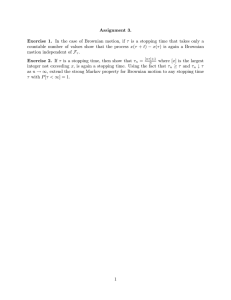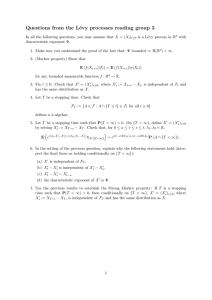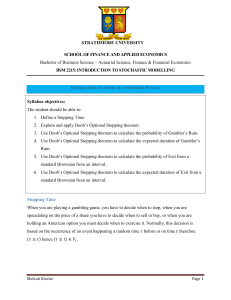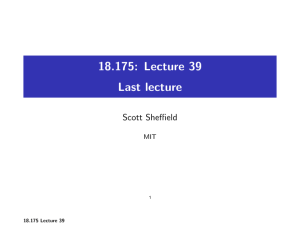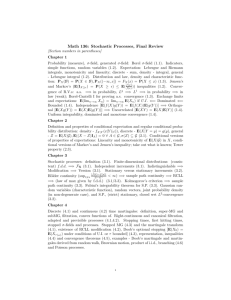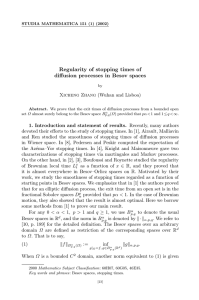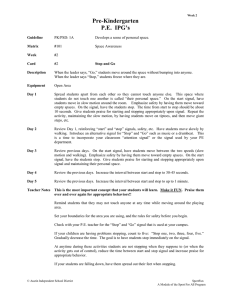Homework Assignment #3 be an R 1: Let B(t), F , P
advertisement
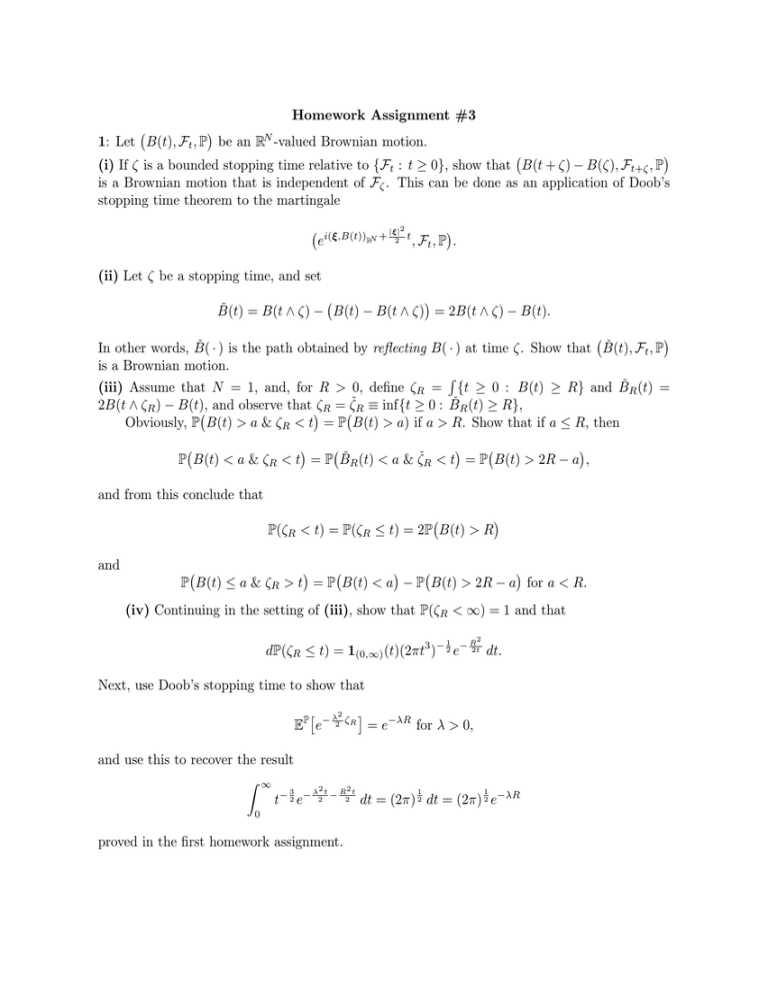
Homework Assignment #3
1: Let B(t), Ft , P be an RN -valued Brownian motion.
(i) If ζ is a bounded stopping time relative to {Ft : t ≥ 0}, show that B(t + ζ) − B(ζ), Ft+ζ , P
is a Brownian motion that is independent of Fζ . This can be done as an application of Doob’s
stopping time theorem to the martingale
ei(ξ,B(t))RN +
|ξ|2
2
t
, Ft , P .
(ii) Let ζ be a stopping time, and set
B̌(t) = B(t ∧ ζ) − B(t) − B(t ∧ ζ) = 2B(t ∧ ζ) − B(t).
In other words, B̌( · ) is the path obtained by reflecting B( · ) at time ζ. Show that B̌(t), Ft , P
is a Brownian motion.
R
(iii) Assume that N = 1, and, for R > 0, define ζR = {t ≥ 0 : B(t) ≥ R} and B̌R (t) =
2B(t ∧ ζR ) − B(t), and observe that ζR = ζ̌R ≡ inf{t ≥ 0 : B̌R (t) ≥ R},
Obviously, P B(t) > a & ζR < t = P B(t) > a) if a > R. Show that if a ≤ R, then
P B(t) < a & ζR < t = P B̌R (t) < a & ζ̌R < t = P B(t) > 2R − a ,
and from this conclude that
P(ζR < t) = P(ζR ≤ t) = 2P B(t) > R
and
P B(t) ≤ a & ζR > t = P B(t) < a − P B(t) > 2R − a for a < R.
(iv) Continuing in the setting of (iii), show that P(ζR < ∞) = 1 and that
1
R2
dP(ζR ≤ t) = 1(0,∞) (t)(2πt3 )− 2 e− 2t dt.
Next, use Doob’s stopping time to show that
λ2 EP e− 2 ζR = e−λR for λ > 0,
and use this to recover the result
Z ∞
3
λ2 t
R2 t
1
1
t− 2 e− 2 − 2 dt = (2π) 2 dt = (2π) 2 e−λR
0
proved in the first homework assignment.
